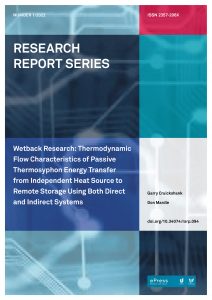 The method of heating water by means of a water jacket installed in the firebox of a solid-fuel burner, connected by pipes to a hot-water cylinder (HWC), was once commonplace in New Zealand, but has become less so in recent years. These systems, known as wetbacks, are covered by Building Code Clause G12, but considerable confusion has been caused by conflicting rules specified in the two main compliance documents, G12/AS1 and AS/NZS 3500.4 (hot water). In both compliance documents, wetback systems are defined as ‘uncontrolled heat sources’ with specific rules and limitations that stipulate how they are to be installed, and to keep them safe. However, other than common safety rules, each has entirely different ‘mandatory’ installation rules that affect the efficiency of the systems. They couldn’t both be right, but they could both be wrong. This is further confused by another standard, NZS 4603:1985, being mentioned in G12 as ‘another acceptable solution’ and differing from and contradicting both of the above. This standard is often quoted by manufacturers in their instructions. One driver of this research, from a regulatory view, was to determine which of the two main compliance documents was correct, if either.
The method of heating water by means of a water jacket installed in the firebox of a solid-fuel burner, connected by pipes to a hot-water cylinder (HWC), was once commonplace in New Zealand, but has become less so in recent years. These systems, known as wetbacks, are covered by Building Code Clause G12, but considerable confusion has been caused by conflicting rules specified in the two main compliance documents, G12/AS1 and AS/NZS 3500.4 (hot water). In both compliance documents, wetback systems are defined as ‘uncontrolled heat sources’ with specific rules and limitations that stipulate how they are to be installed, and to keep them safe. However, other than common safety rules, each has entirely different ‘mandatory’ installation rules that affect the efficiency of the systems. They couldn’t both be right, but they could both be wrong. This is further confused by another standard, NZS 4603:1985, being mentioned in G12 as ‘another acceptable solution’ and differing from and contradicting both of the above. This standard is often quoted by manufacturers in their instructions. One driver of this research, from a regulatory view, was to determine which of the two main compliance documents was correct, if either.
Wetback Research: Thermodynamic Flow Characteristics of Passive Thermosyphon Energy Transfer from Independent Heat Source to Remote Storage Using Both Direct and Indirect Systems. Unitec ePress Research Report Series (1/2022).
https://doi.org/10.34074/rsrp.094
Unitec ePress periodically publishes research report papers that highlight findings of completed research projects by current members of staff and their research associates. All papers are blind reviewed. For more papers in this series please visit: www.unitec.ac.nz/epress/index.php/category/publications/epress-series/research-reports-epress-series/
Authors: Garry Cruickshank and Don Mardle
ISSN: 2357-206X
Published: 16.12.2022